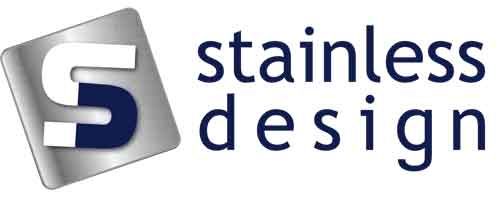Product Certification
Stainless Design specialises in the manufacturing of patented stainless steel balustrade components and is at the forefront of innovative products. We proudly hold all the necessary certifications to ensure compliance with safety regulations and building standards. Explore below to view all our certifications.

Building Regulations – Form 3
You may require a FORM3 for your installation.
In this event, please advise your installer before installation.
Stainless Design will then appoint a competent person to complete the process.
- All Stainless Design balustrade systems are tested to ensure that they comply with the legislative standards.
- The SDApp used by our installers specifies the mounting position of the installation, thereby ensuring that they do not deviate from the proven rational design of the tested products.
- The installation process is performed according to our documented procedure.
- The use of only approved fixing agents are permitted as specified by us.
- Substrates are checked to ensure sufficient strength for proper mounting.
- The installation process is documented by the installer and photographic evidence of compliance is required for verification.
Product Testing
All Stainless Design products conform to the legislated design requirements for balustrades and are tested to ensure that they meet the general design loads and structural forces that the balustrading must withstand.
-
It is a requirement of SANS 10160 that the safety glass of a balustrade within 500mm of the floor level must withstand an impact of 400J delivered by means of a 250mm diameter bag filled with dry sand to a mass of 30kg and all Stainless Design’s products are tested to ensure that they conform to this standard.
-
This requirement can reduce to 200J for stairs and residential barriers where the distance from the wall to barrier is less than 1.5m.
-
Furthermore, the general rule is that a balustrade must withstand a line load on 0.5KN for residential, 1.5KN for commercial and 3KN for escape routes.
-
Stainless Design conducts these tests in-house and once it is established that the product in question complies with the standard, the test is then performed in the presence of an independent qualified glazing engineer.
-
Test Certificates are available for all our products.
-
The safety of the balustrade installation is dependent not only on the strength of these components and products used but also on the correct use and specification of these products and the professional installation thereof.
The following is an example of this procedure for the tests done on our Square Spigot.
Warranty Certificate
-
Stainless Design provides a limited lifetime warranty on all balustrade products.
-
The lifetime warranty covers any defects caused by the manufacturing and assembly and guarantees the raw material specification.
-
Warranties do not cover damage caused due to abuse or misuse.
-
Installations in highly corrosive environments may require routine periodic cleaning, as detailed in our maintenance document to ensure aesthetic longevity.
Legislation
Balustrades are structural systems that impede accidental or inadvertent passage of people and objects between the areas that they separate.
Being such a safety-critical item, it is therefore not surprising that strict legislation governs the structural strength of the various applications and the non-structural design aspects.
Legislation governing the general design of balustrading varies from country to country.
For example, an accepted design in South Africa for Stainless Steel balustrades uses horizontal filler bars. This design is illegal for installations in public places and, in some instances, even private homes in most countries, as it is deemed unsafe for children.
The height specification of 1m, which is the norm in South Africa, is slightly lower than that legislated by many other governments, with the international norm being 1.1m.
The general design also varies with South African legislation, stating that barriers should be designed so that the widest gap in the barrier does not permit a sphere of diameter 100mm to pass through, making due allowance for deflection under load (refer SANS 10400-D: Public Safety). In some of the foreign markets that we service, the allowable gap between filler elements is 110mm.
General design loads and structural forces that the balustrading must withstand also differ.
It is therefore imperative that foreign customers are familiar with their legislative requirements and whether any formal testing or accreditation is required prior to a product being installed.
The South African National Building Regulations refer to:
-
SANS 10400-B : Structural Design, which in turn refers to
-
SANS 10400 Parts 1 to 8 : Basis of Structural Design and Actions for Buildings and Industrial Structures
-
SANS 10140 : Handrailing and balustrading (safety aspects)
-
SANS 10137 : The Installation of Glazing in Buildings









